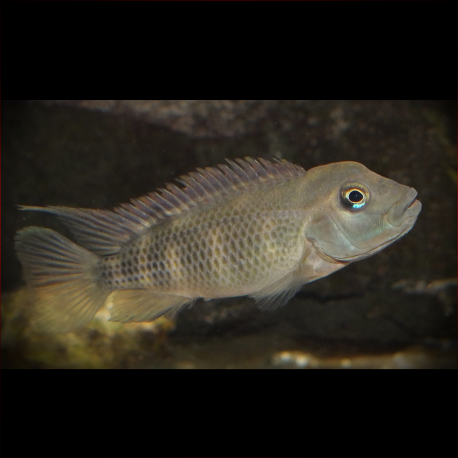More info
Datasheet
| Minimum Tank Size | 70 litres / 18.49 US gallons |
| Maximum Size | 12.0cm / 4.72inches |
| Temperature | 24°C / 75.20°F - 28°C / 82.40°F |
| Hardness | 2-15ºdH |
| pH | 6.0-7.5 |
General Description
The Blockhead Cichlid (Steatocranus casuarius) is an easily kept cichlid characterized by its somewhat drab coloration, compensated by its engaging behavior. Also known as the "Humphead," "Lionhead," or "Buffalohead" cichlid, this species is adapted to swift waters, with a modified swim bladder to prevent being carried away by strong currents. In the aquarium, it is often found resting on the substrate or hiding in caves and tunnels, exhibiting comical swimming behavior with short, choppy movements. Interestingly, the distinctive hump on its head can change in size relatively quickly.
Aquarium Setup
For optimal care, a tank size of at least 70 liters is recommended for the Blockhead Cichlid. The aquarium should have a sandy substrate to accommodate their digging habits, with rocks arranged to create secure caves and tunnels. Driftwood and robust plants like Anubias can also be added. The water should be well-oxygenated, with variations in flow rate to mimic their natural habitat. Providing quiet areas with low currents and alternative shelters like upturned flowerpots or PVC piping is advisable.
Behaviour
Steatocranus casuarius is a territorial species but can coexist with other fish sharing similar requirements. Suitable tankmates include Alestiid tetras, certain catfish species, larger characins, and barbs. It is best kept in pairs, with a spacious tank necessary for housing multiple pairs together. Avoid keeping them with other cichlids unless the aquarium is exceptionally large to prevent aggression.
Feeding and Diet
The Blockhead Cichlid readily accepts dried pellets or flakes but benefits from a varied diet including live and frozen foods like bloodworms and brineshrimp. Supplementing their diet with these protein-rich foods enhances their overall health and vitality.
Reproduction & Dimorphism
Breeding the Blockhead Cichlid is relatively straightforward, with the species being monogamous cave spawners. Pair bonding is strong, with individuals preferring to select their own partners. Successful breeding can occur in community setups, but a species tank with minimal disturbance is ideal. The male grows larger and develops a more prominent nuchal hump compared to the female.
Habitat and Distribution
Native to the Democratic Republic of Congo, S. casuarius inhabits fast-moving and turbulent regions within the Lower Congo River and its tributaries, often occupying pockets of calm water. In their natural habitat, these cichlids thrive in environments with strong currents, which should be replicated to some extent in aquarium settings.

